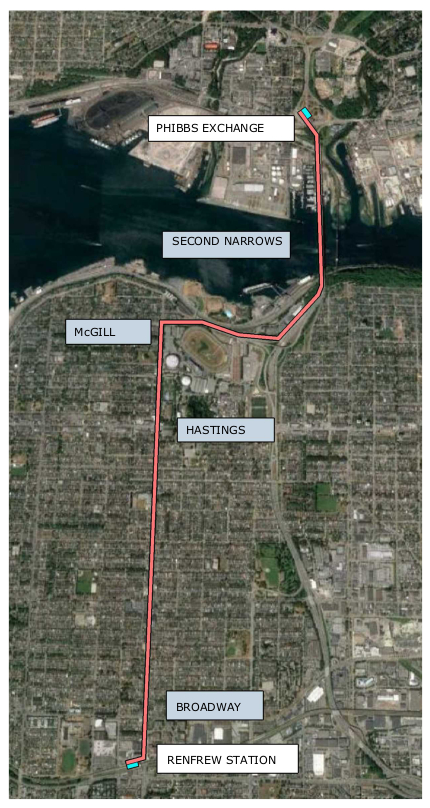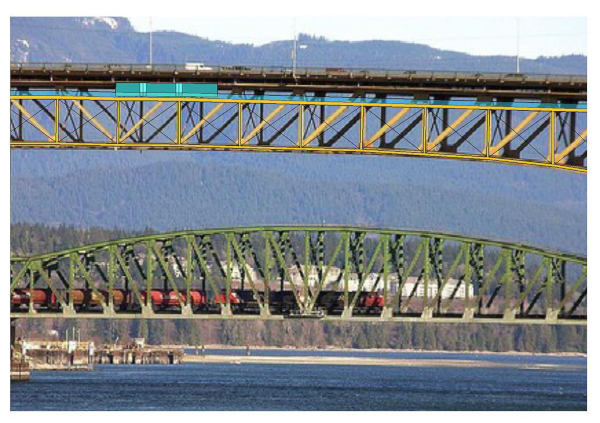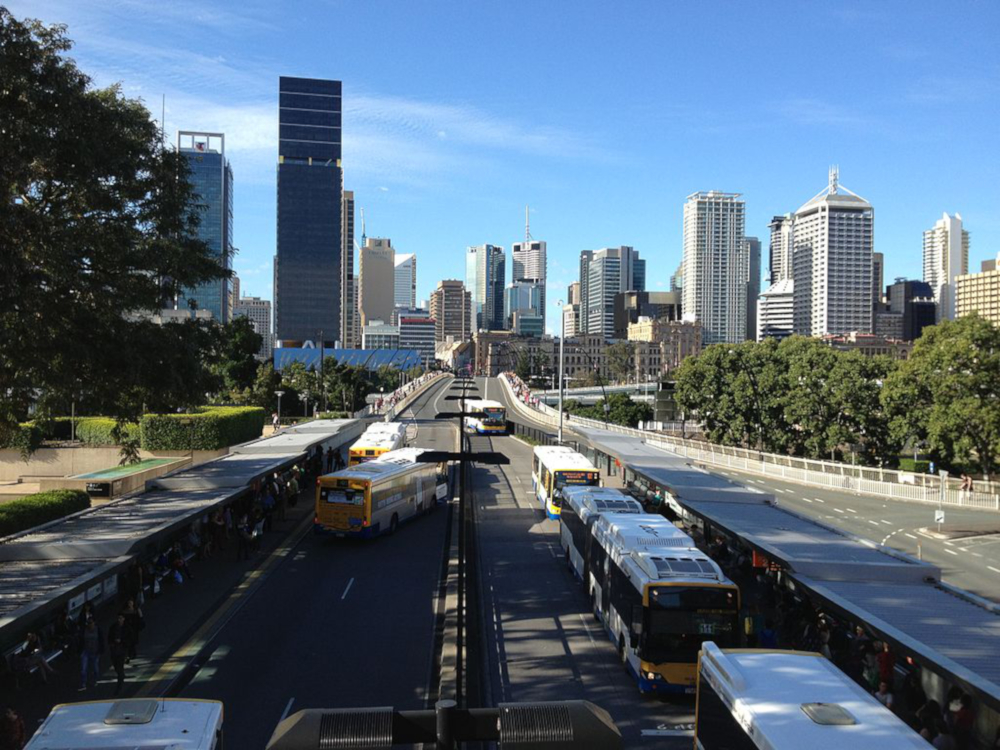For generations, the public transit bus has been considered the “loser cruiser” — slow, noisy, and smelly, but sufficient for those unable to drive their own cars. This attitude is ingrained in cities across North America. Vancouver — where nearly $3 billion are slated for a crosstown subway just 5.7 km long — is no exception.
At that price, it’s pretty clear the cure for region-wide traffic jams can’t be trains in tunnels, nor soaring bridges that cost billions, too.
What about a better breed of bus that’s faster, more reliable, maybe even…comfy?
The clogged North Shore and the Ironworkers Memorial Second Narrows Bridge are a case in point. Every day, thousands of vehicles fight their way across the bridge in the morning and again in the afternoon. Either direction, drivers (and bus passengers) endure endless gridlock. Some kind of rapid transit is needed to link North and West Vancouver with Vancouver and the Fraser Valley.
For a fraction of the cost of a new bridge or Skytrain, a recent proposal might just work: bus rapid transit.
Bruce Watt, a retired Edmonton architect who’s lived on the North Shore since 2008, developed his proposal last spring. He recently told The Tyee that he’d emailed it to all the North Shore council members, MLAs, and MPs. Watt says former Burnaby Mayor Derrick Corrigan, then the head of the Mayors’ Council, was very interested. Watt also discussed it with North Van-Lonsdale MLA Bowinn Ma.
Copies of Watt’s proposal are circulating outside the municipal bureaucracies, but the public hasn’t heard much about it. It could stir some useful discussion about how to improve transportation in the Vancouver area without bringing in still more cars.
Watt envisages a “bus rapid transit” link between Phibbs Exchange, at the north end of the Ironworkers, to the Skytrain at Renfrew. He sees three key benefits of BRT: reduced traffic on the bridge, fuller integration of the North Shore with the rapid transit system south of the harbour, and a cheap way for lower-paid workers on the North Shore to get to work from their homes elsewhere.

Watt’s plan calls for “bi-articulated buses,” able to carry 250 passengers, moving on new dedicated bus lanes from Phibbs Exchange in North Vancouver to the bridge, which will be fitted with automated guideway lanes for the buses on its outside edges and below the car deck. Once over the bridge, the buses would move on dedicated lanes to McGill Avenue, and then down Renfrew to the Millennium line Skytrain station.
BRT systems might be new to Vancouver, but Watt says they operate in over 200 cities around the world, from Boston to Instanbul to Jakarta. They’re strikingly inexpensive: a billion US dollars, Watt argues, would buy seven km of subway line, 12 km of Skytrain, 40 km of light rail transit — or 426 km of BRT.
This BRT, therefore, would be remarkably cheap — perhaps $150-$200 million for a link between a rebuilt Phibbs Exchange, over the bridge, and 30 blocks to the Renfrew station. The price would include 2.7 km of bridge structures, 3.3 km of guideway lanes, 4.12 km of roadway preparation, eight stations, and 45 buses.
The BRT buses, because they would be running on lanes built on the outsides of the bridge and about 18 metres (60 feet) below the main bridge deck, would not interfere with vehicle traffic (and would offer spectacular views of the harbour). With only one or two buses at a time on the bridge, the guideway structure need not be a serious burden on the bridge itself.

Once over the bridge, buses would run down McGill and then to Renfrew, with stops at McGill, Hastings, and Broadway. At Renfrew, buses would loop around for the return trip to Phibbs. (Watt suggests a possible extension down Renfrew to the Boyd Diversion, then along Nootka to the 29th Avenue Skytrain station on the Expo line.)
“The BRT buses would be operated by drivers in 2 modes,” Watt writes: “either driver operated when the bus is sharing road space with general traffic along conventional roads … or passively run (gas/brake pedals only) by the driver while moving along the separate guideway lanes.”
Watt suggests the Volvo B340M as the best vehicle for the BRT: It has three segments for a total length of 27 metres (88.5 feet) and can carry 250 passengers at a time. Running once every four minutes at rush hour, such buses could move 3,730 passengers per hour; with shorter stops, that could be 5,560 passengers per hour in each direction.
The Ironworkers would see a comparable reduction in vehicle traffic — and perhaps more, since a major densification project is under way on Mountain Highway near Phibbs Exchange. The BRT would be an attractive alternative for new residents who would otherwise have to add their own cars to the mess.

But to attract passengers, the BRT would also have to offer much better facilities at bus stops, especially Phibbs. The exchange would need a roof, amenities like toilets and a convenience store, and much more seating. With hundreds or thousands of passengers leaving and arriving, each station would need careful design to help people move quickly and safely, especially persons with disabilities. Still, these are issues many other cities have dealt with, and Vancouver could learn from their best practices.
Perhaps a better idea for North Shore rapid transit is out there, but it’s unlikely to emerge unless a more informed debate develops about the issue. Bruce Watt’s BRT proposal looks like a good way to start that debate. ![]()
Read more: Transportation















Tyee Commenting Guidelines
Comments that violate guidelines risk being deleted, and violations may result in a temporary or permanent user ban. Maintain the spirit of good conversation to stay in the discussion.
*Please note The Tyee is not a forum for spreading misinformation about COVID-19, denying its existence or minimizing its risk to public health.
Do:
Do not: